Creating a multisite in WordPress allows you to manage updates and other administrative tasks across multiple websites. Rather than handling many individual sites, you’re able to build a centralized network on a single WordPress installation. However, you may be disappointed by WordPress’s default options for subsite domains.
Fortunately, you can easily create a WordPress multisite with different domains. By simply adding some code to your site files, you can turn your single-site installation into a network. Then, you can attach new websites and make them unique with domain mapping.
In this post, we’ll explain why you might consider using WordPress multisite. Then, we’ll show you how to create custom domains for each subsite in your network. Let’s get started!
Why Create a WordPress Multisite With Different Domains?
With WordPress multisite, you can create a network of websites in a single installation. These sites will share the same core WordPress files and can also contain the same plugins and themes.
When you create a multisite, you can automatically become the new network administrator. Using a central dashboard, you’ll be able to manage all of your sites in one place. Any site admins will now be able to create new websites and work on them independently while you control the general network.
This can be an efficient way for businesses or schools to handle unique websites for each of their locations. For example, the University of Mary Washington has a network that leads to information for each individual campus:

When you activate WordPress multisite, you can choose to use subdomains or subdirectories. Here’s an example of how these would look:
- Subdomains: site1.kinsta.com
- Subdirectories: kinsta.com/site1
As you can see, both of these options can make links longer and perceivably less credible. However, you can implement domain mapping to set up a custom domain structure. By pointing to an external domain, like “kinsta.com,” visitors will immediately know that each individual site is a part of your network.
Although WordPress multisite can have many benefits, there are some downsides to consider. For instance, all of the sites on your network will use the same resources, so they can face downtime whenever your server is down.
Additionally, some plugins aren’t designed to work on multisites, which can lead to software conflicts or bugs. Still, if you discover any serious issues after you’ve established your multisite, you can always revert to a single-site installation again.
How To Create a WordPress Multisite With Different Domains (in 4 Steps)
Before you start transitioning your WordPress website to a network, you’ll need to make sure your web host can support this process. At Kinsta, we provide WordPress multisite hosting that makes it easy to start managing multiple domains:
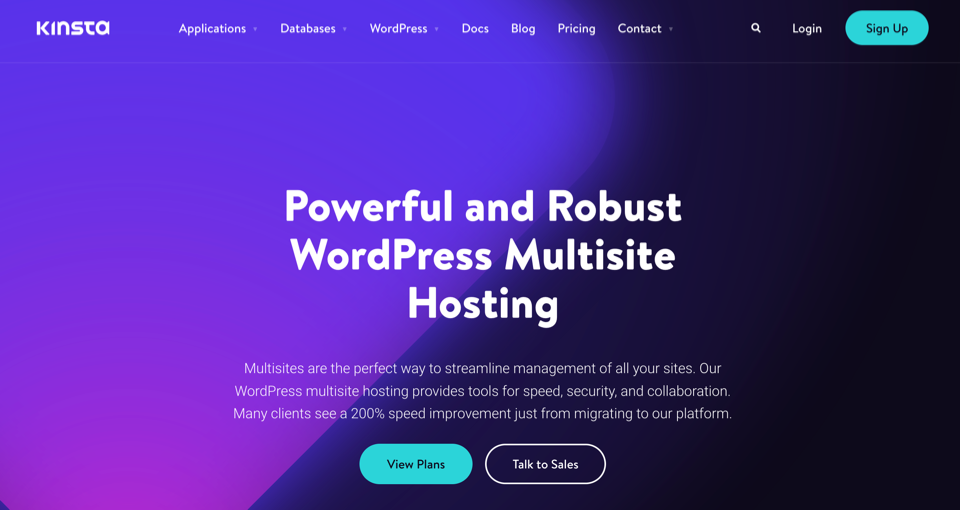
With a built-in caching system, Kinsta can help you optimize the performance of your WordPress multisite network. Thanks to global data centers and powerful infrastructure, you won’t have to worry about slow page speed or frequent downtime.
Whenever you’re ready to upgrade your hosting, you can migrate your website to Kinsta for free! Once you’re all set with a dependable web host, you’re ready to start creating a WordPress multisite with different domains.
Step 1: Backup Your Website
If you’re creating a new website from scratch, you can activate multisite as you install WordPress. Using MyKinsta is highly straightforward. Simply click on Add site in your dashboard. Then, be sure to select Install WordPress multisite:
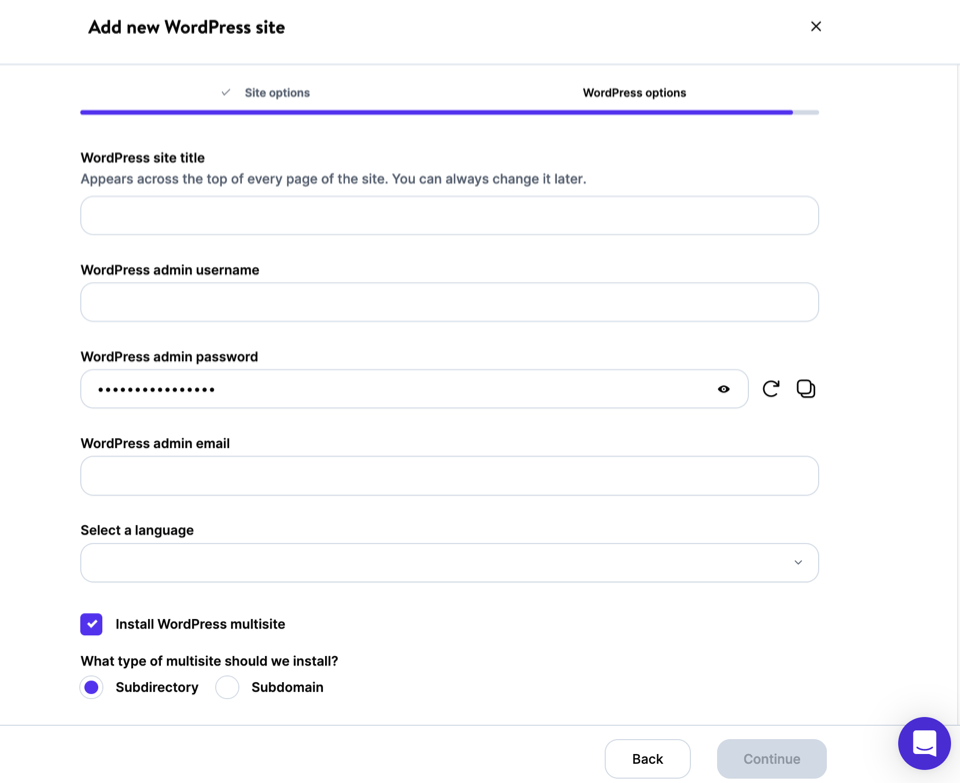
You’ll also need to choose either a subdirectory or subdomain. After you click on Continue, you’ll be able to log into your new WordPress multisite dashboard.
However, you may already have an existing site. In this case, it’s best to start by backing up your website. Since you’ll be editing your core WordPress files, this is an important step to avoid losing your hard-earned content and any critical data.
Once you migrate your website to Kinsta, sign in to your MyKinsta dashboard. Then, navigate to Sites and select your website:
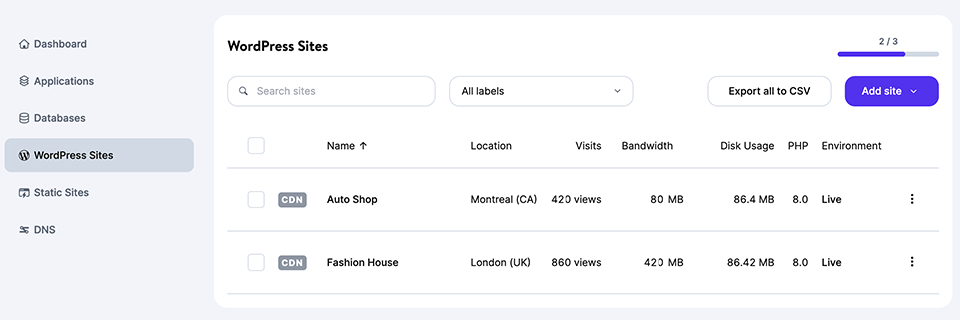
From the list of tabs on the left, click on Backups. Here, you’ll see a list of daily automatic backups that Kinsta has performed:

If you notice a recent backup, you can continue to the next step. To perform a manual backup, however, select the Manual > Back up now option:
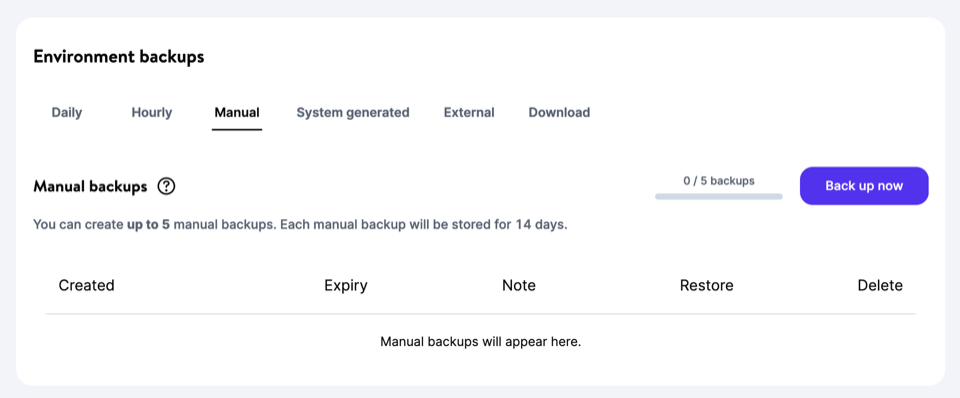
Before you create the backup, you’ll be able to add a short note to identify it later. Lastly, click on Create backup:

You can easily restore this backup if anything goes wrong while setting up multisite. This will revert any changes to your original site.
Step 2: Set Up Multisite
Now it’s time to transition your single-site WordPress installation into a multisite network! To do this, you’ll need to edit your wp-config.php and .htaccess files. First, use a code editor to open your site’s wp-config.php file. Here, find this line:
/* That's all, stop editing! Happy blogging. */Right above this, paste the following code:
define( 'WP_ALLOW_MULTISITE', true );Finally, save the file. Next, open your WordPress dashboard and go to Tools > Network Setup:
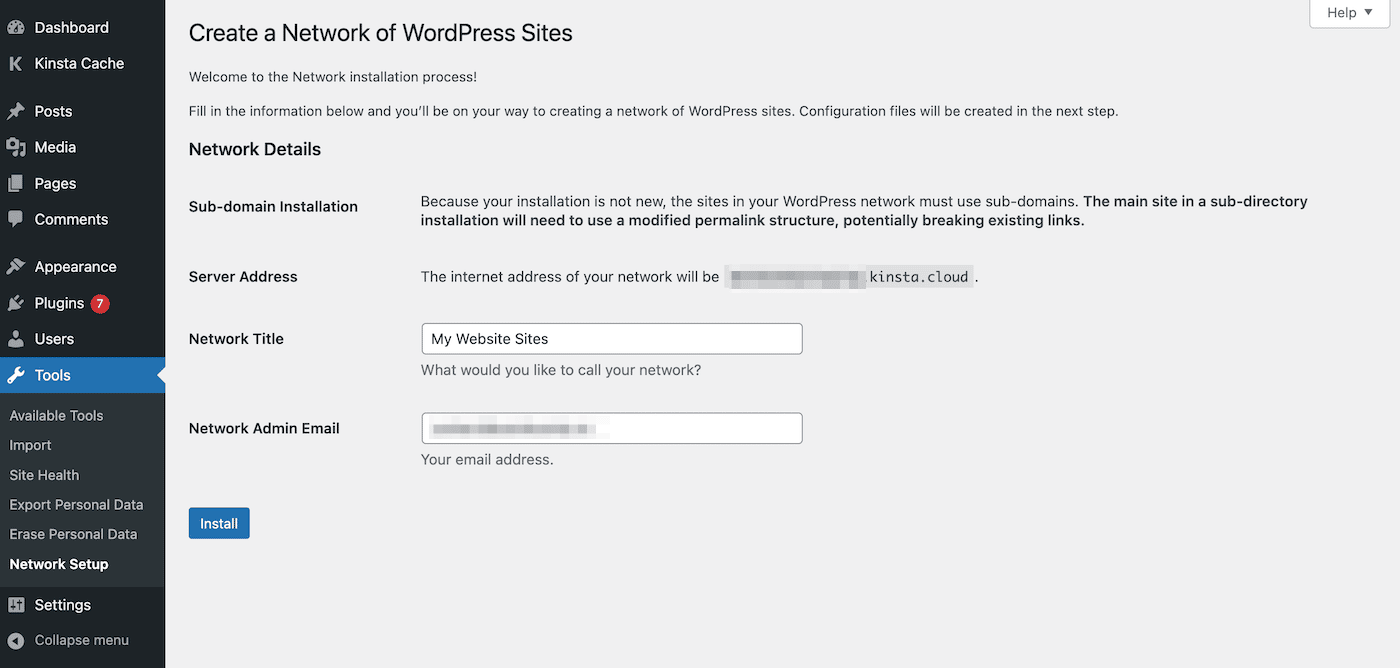
On this page, you’ll be able to choose whether to use subdomains or subdirectories in your network. However, older WordPress installations will only be able to use subdomains. Then, enter a title and admin email for the network.
After you hit Install, you’ll be taken to a configuration page. This will give you instructions on how to update your core files to support multisite:
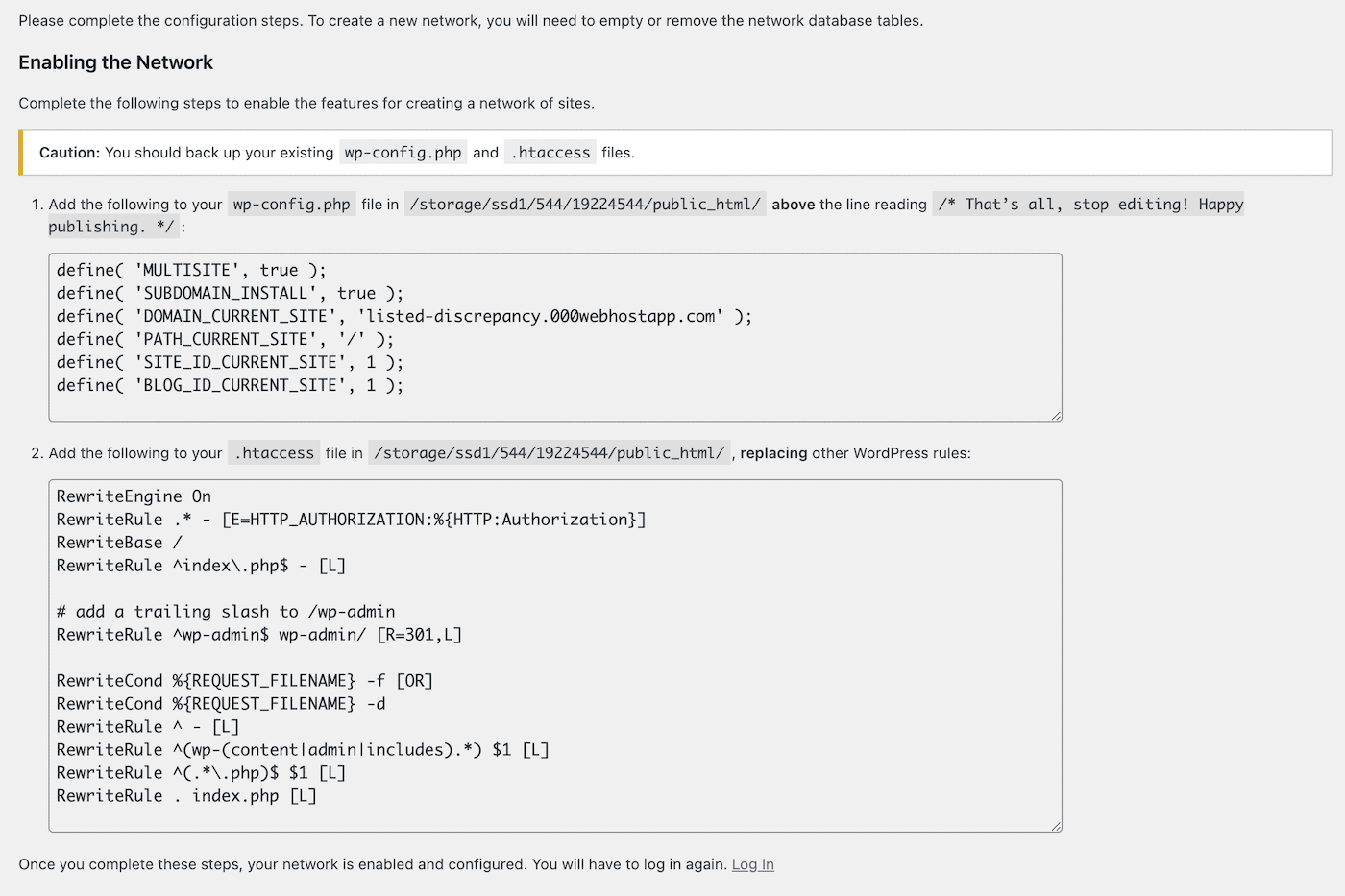
Once you add the correct coding to your wp-config.php and .htaccess files, you’ll need to sign into your WordPress dashboard again. If done correctly, this should now take you to your new multisite dashboard.
Step 3: Add Sites to the Multisite Network
To start building your network, you can create a new website. First, navigate to Sites > Add New:
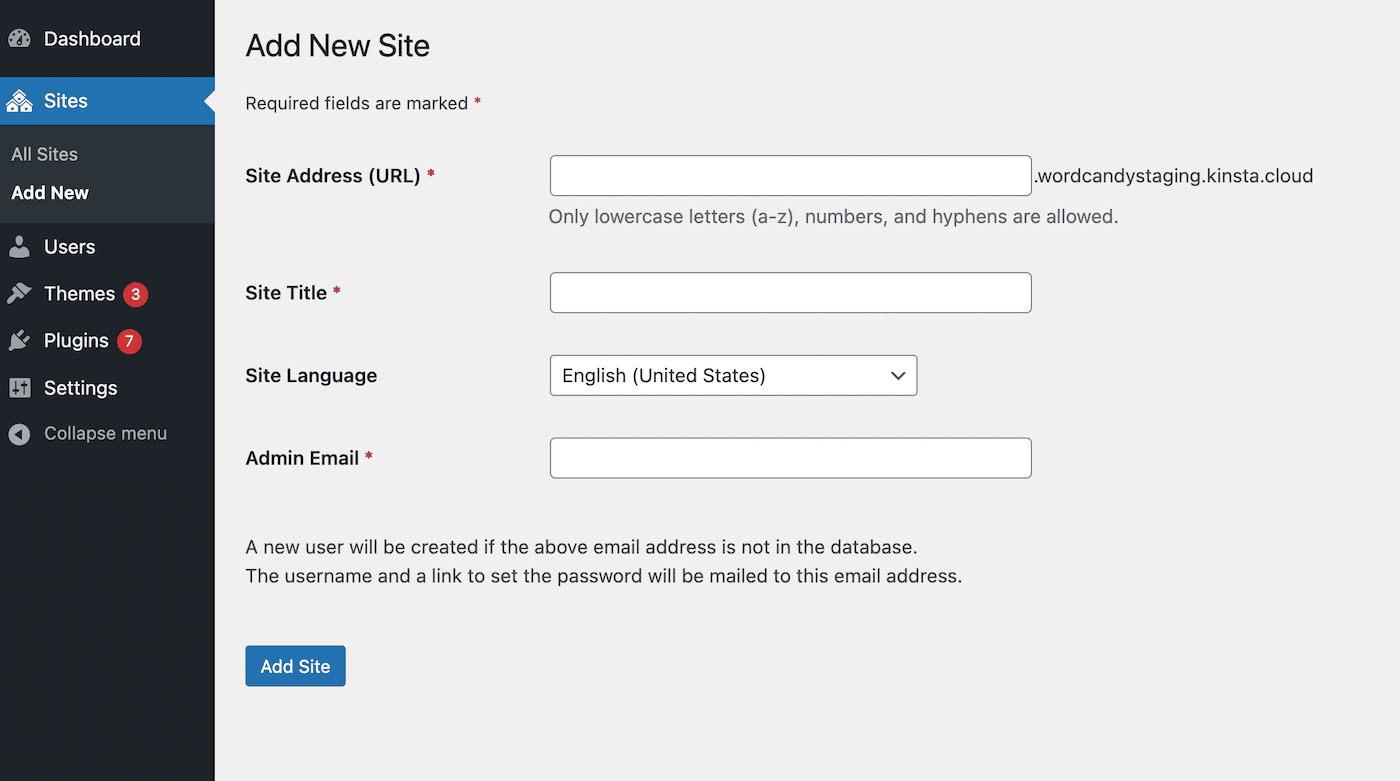
On this configuration page, you’ll be able to customize your new site. You can start by entering the Site Address, which would be the URL for the website.
For this setting, it will currently only allow values that are subdomains of the main site. However, we’ll be changing this to a custom domain in the following step.
Next, choose a title, main language, and admin email. To finish creating the website, click on Add Site. After this, you can continue to add as many websites to the network as you need.
Step 4: Map a Domain for Each Site
For the final step, you can map your subdomains or subfolders to a custom domain. Rather than having lengthy, confusing URLs, you can create unique addresses for your websites. To do this, navigate to Sites > All Sites in your multisite dashboard:

Hover over the new website to view its configuration options. Then, click on Edit:
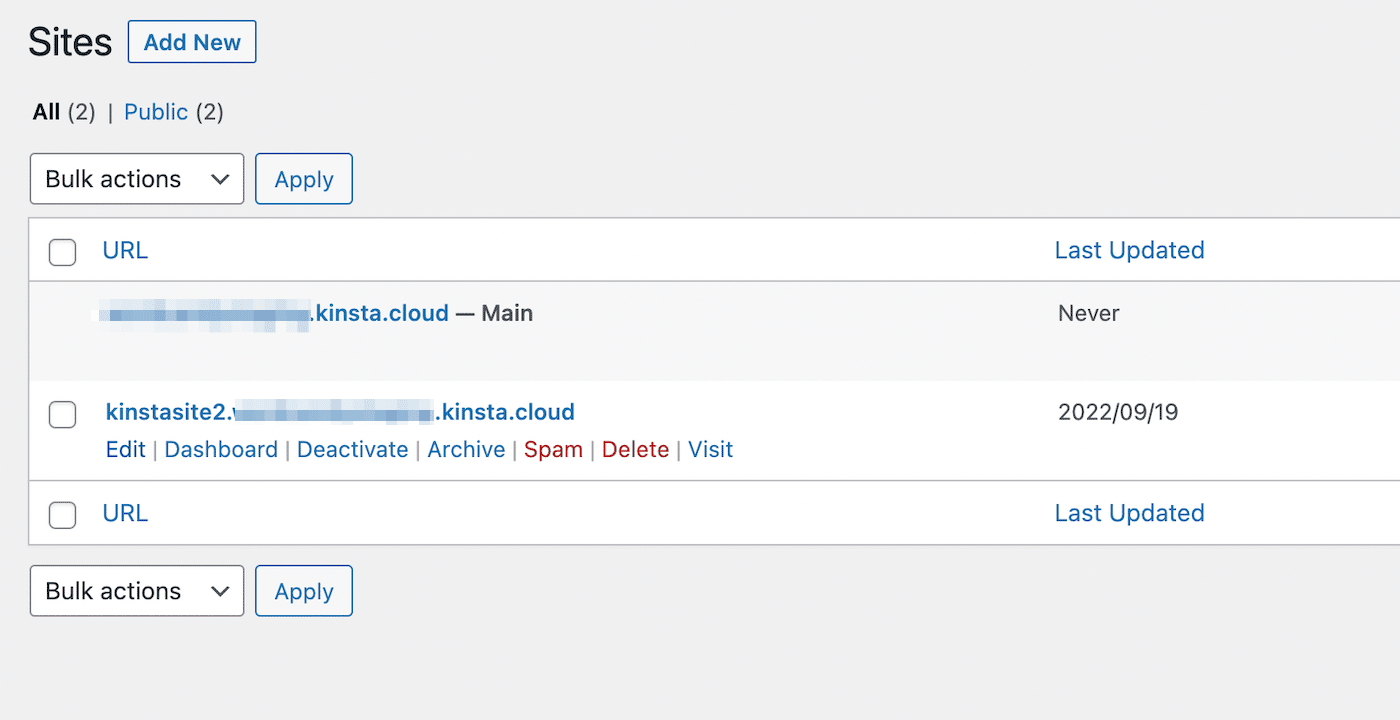
Here, you’ll see the current Site Address, which includes the subdomain. Remove this and replace it with a custom domain:
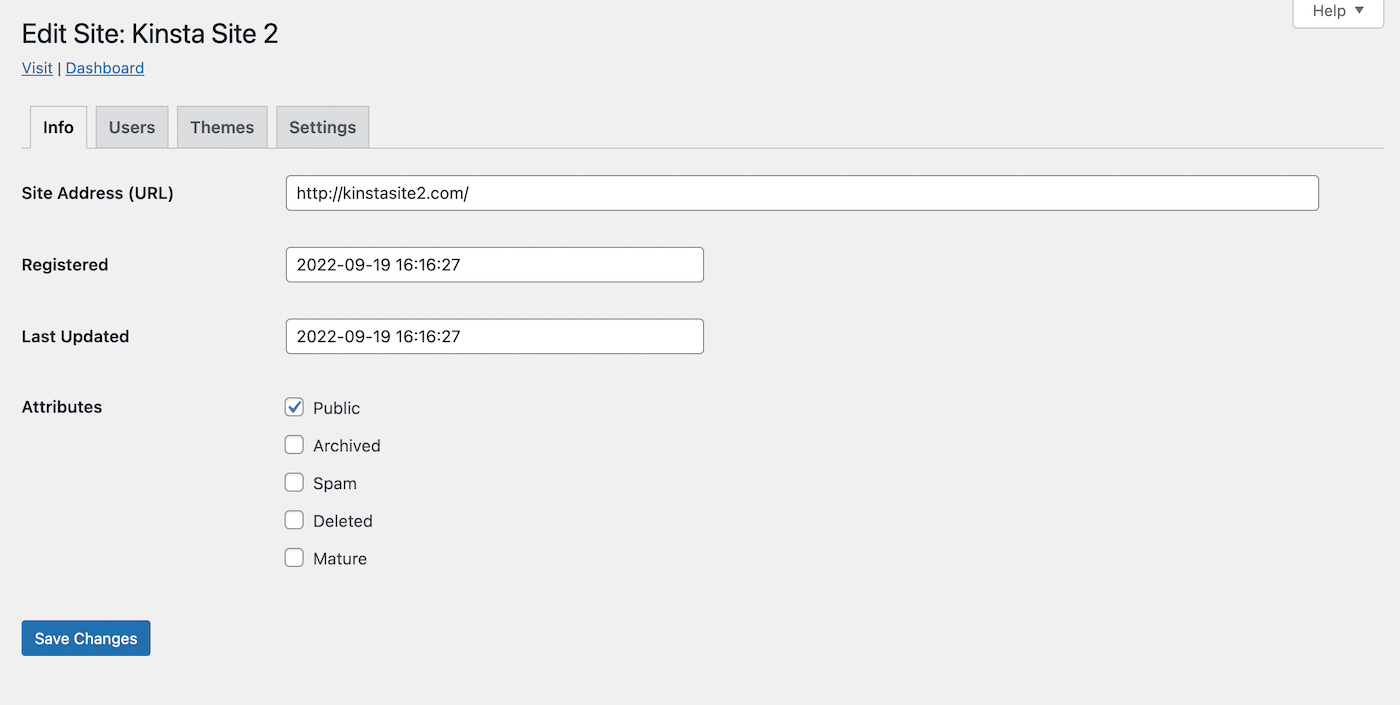
Then, save your changes. Be sure to repeat this process for each subsite in your network.
Next, you’ll need to add these additional subsite domains to your hosting account. In your MyKinsta dashboard, open the Domains page and click on Add Domain:
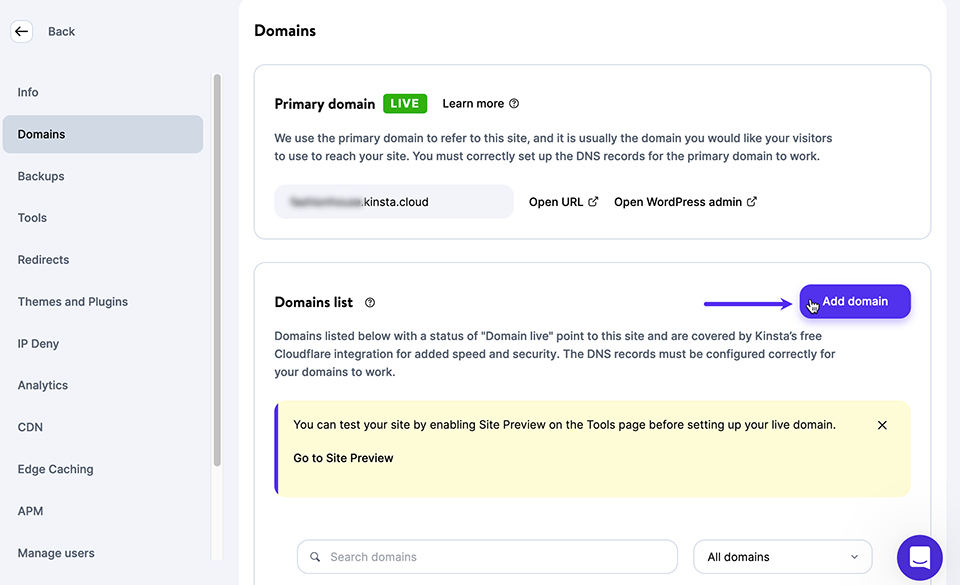
In the pop-up window, list all of the new subsite domains and separate them with commas. Once you’re finished, select Add domain:
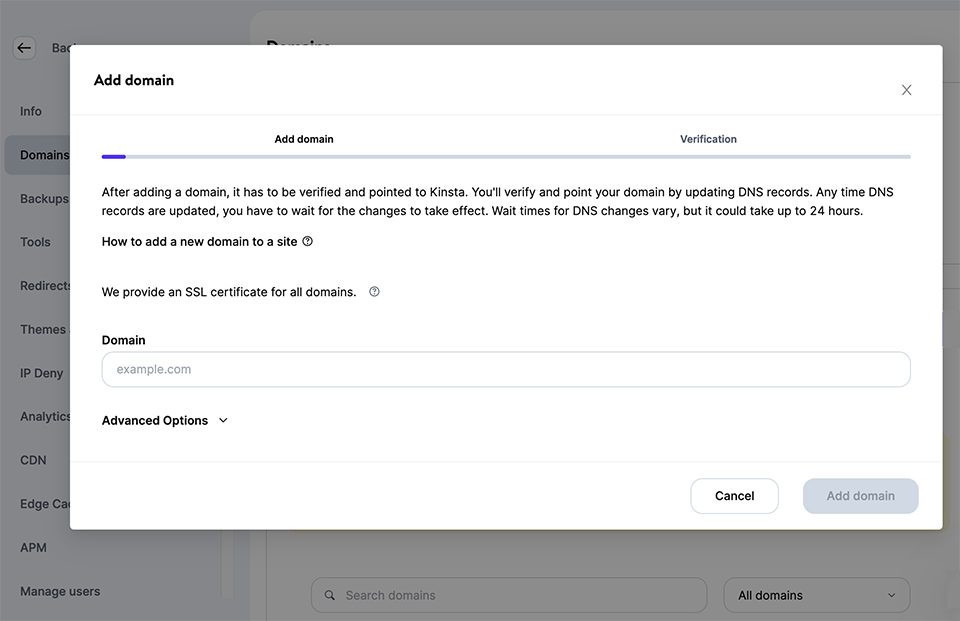
Now you’re free to start using your WordPress multisite with different domains! You can start installing multisite plugins and performing other necessary administrative tasks on your network.
Summary
Creating a WordPress multisite can often be an effective way to structure websites that need multiple subsites. This allows you to build an easy-to-manage network with centralized themes, plugins, and updates. Although this may involve a more complicated setup process than a single installation, it can be more efficient in the long term.
When building a WordPress multisite, you can set up individual websites as subdomains or subdirectories. However, you’re also able to create custom domains for each subsite. This can help retain your brand identity and avoid generating long and unreadable URLs.
When you’re ready to start transitioning to a multisite, you’ll need a web host to support you along the way. Check out our multisite hosting plans to start managing up to 150 WordPress sites today!



Leave a Reply